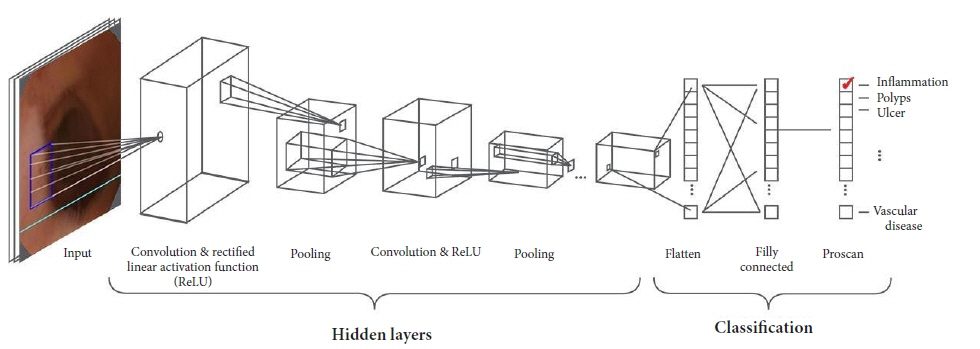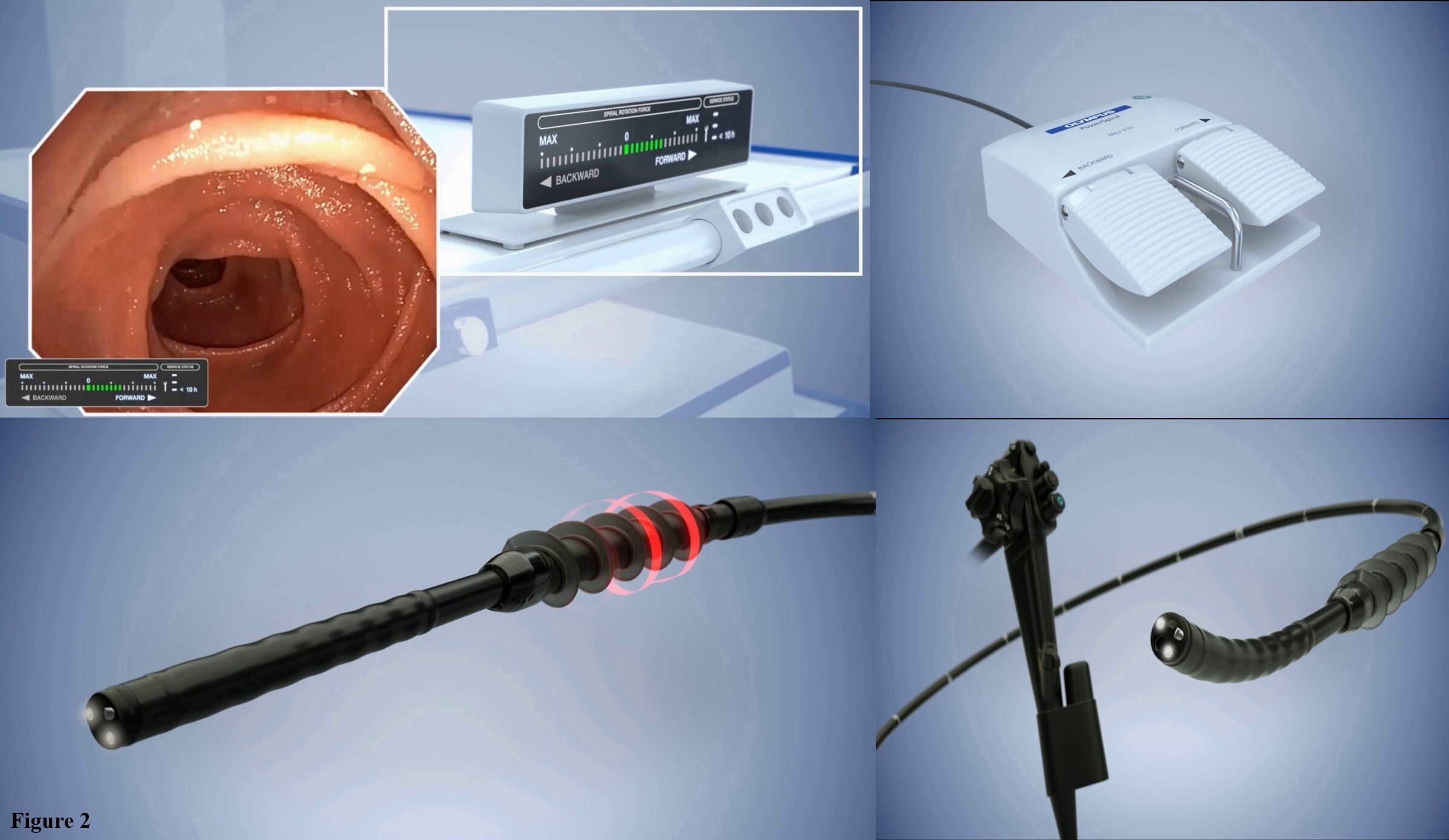Clin Endosc.
2022 Jul;55(4):473-479. 10.5946/ce.2022.113.
Recent developments in small bowel endoscopy: the “black box” is now open!
- Affiliations
-
- 1Gastroenterology Unit, Santa Maria delle Croci Hospital, Ravenna, Italy
- 2Department of Medical and Surgical Sciences, S. Orsola-Malpighi Hospital, Bologna, Italy
- 3Gastroenterology Unit, Valduce Hospital, Como, Italy
- KMID: 2531938
- DOI: http://doi.org/10.5946/ce.2022.113
Abstract
- Over the last few years, capsule endoscopy has been established as a fundamental device in the practicing gastroenterologist’s toolbox. Its utilization in diagnostic algorithms for suspected small bowel bleeding, Crohn’s disease, and small bowel tumors has been approved by several guidelines. The advent of double-balloon enteroscopy has significantly increased the therapeutic possibilities and release of multiple devices (single-balloon enteroscopy and spiral enteroscopy) aimed at improving the performance of small bowel enteroscopy. Recently, some important innovations have appeared in the small bowel endoscopy scene, providing further improvement to its evolution. Artificial intelligence in capsule endoscopy should increase diagnostic accuracy and reading efficiency, and the introduction of motorized spiral enteroscopy into clinical practice could also improve the therapeutic yield. This review focuses on the most recent studies on artificial-intelligence-assisted capsule endoscopy and motorized spiral enteroscopy.
Keyword
Figure
Reference
-
1. Iddan G, Meron G, Glukhovsky A, et al. Wireless capsule endoscopy. Nature. 2000; 405:417.2. Yamamoto H, Sekine Y, Sato Y, et al. Total enteroscopy with a nonsurgical steerable double-balloon method. Gastrointest Endosc. 2001; 53:216–220.3. Pennazio M, Spada C, Eliakim R, et al. Small-bowel capsule endoscopy and device-assisted enteroscopy for diagnosis and treatment of small-bowel disorders: European Society of Gastrointestinal Endoscopy (ESGE) Clinical Guideline. Endoscopy. 2015; 47:352–376.4. Mussetto A, Fuccio L, Dari S, et al. MiroCam capsule for obscure gastrointestinal bleeding: a prospective, single centre experience. Dig Liver Dis. 2013; 45:124–128.5. Kim ER. Roles of capsule endoscopy and device-assisted enteroscopy in the diagnosis and treatment of small-bowel tumors. Clin Endosc. 2020; 53:410–416.6. Beg S, Card T, Sidhu R, et al. The impact of reader fatigue on the accuracy of capsule endoscopy interpretation. Dig Liver Dis. 2021; 53:1028–1033.7. Piccirelli S, Milluzzo SM, Bizzotto A, et al. Small bowel capsule endoscopy and artificial intelligence: first or second reader? Best Pract Res Clin Gastroenterol. 2021; 52-53:101742.8. Chan HP, Samala RK, Hadjiiski LM, et al. Deep learning in medical image analysis. Adv Exp Med Biol. 2020; 1213:3–21.9. Dray X, Iakovidis D, Houdeville C, et al. Artificial intelligence in small bowel capsule endoscopy: current status, challenges and future promise. J Gastroenterol Hepatol. 2021; 36:12–19.10. LeCun Y, Bengio Y, Hinton G. Deep learning. Nature. 2015; 521:436–444.11. Soffer S, Klang E, Shimon O, et al. Deep learning for wireless capsule endoscopy: a systematic review and meta-analysis. Gastrointest Endosc. 2020; 92:831–839.12. Tsuboi A, Oka S, Aoyama K, et al. Artificial intelligence using a convolutional neural network for automatic detection of small-bowel angioectasia in capsule endoscopy images. Dig Endosc. 2020; 32:382–390.13. Leenhardt R, Vasseur P, Li C, et al. A neural network algorithm for detection of GI angiectasia during small-bowel capsule endoscopy. Gastrointest Endosc. 2019; 89:189–194.14. Mohan BP, Khan SR, Kassab LL, et al. High pooled performance of convolutional neural networks in computer-aided diagnosis of GI ulcers and/or hemorrhage on wireless capsule endoscopy images: a systematic review and meta-analysis. Gastrointest Endosc. 2021; 93:356–364.15. Klang E, Barash Y, Margalit RY, et al. Deep learning algorithms for automated detection of Crohn’s disease ulcers by video capsule endoscopy. Gastrointest Endosc. 2020; 91:606–613.16. Klang E, Grinman A, Soffer S, et al. Automated detection of Crohn’s disease intestinal strictures on capsule endoscopy images using deep neural networks. J Crohns Colitis. 2021; 15:749–756.17. Vicnesh J, Wei JKE, Ciaccio EJ, et al. Automated diagnosis of celiac disease by video capsule endoscopy using DAISY Descriptors. J Med Syst. 2019; 43:157.18. Saito H, Aoki T, Aoyama K, et al. Automatic detection and classification of protruding lesions in wireless capsule endoscopy images based on a deep convolutional neural network. Gastrointest Endosc. 2020; 92:144–151.19. Trasolini R, Byrne MF. Artificial intelligence and deep learning for small bowel capsule endoscopy. Dig Endosc. 2021; 33:290–297.20. Ding Z, Shi H, Zhang H, et al. Gastroenterologist-level identification of small-bowel diseases and normal variants by capsule endoscopy using a deep-learning model. Gastroenterology. 2019; 157:1044–1054.21. Otani K, Nakada A, Kurose Y, et al. Automatic detection of different types of small-bowel lesions on capsule endoscopy images using a newly developed deep convolutional neural network. Endoscopy. 2020; 52:786–791.22. Dimas G, Spyrou E, Iakovidis DK, et al. Intelligent visual localization of wireless capsule endoscopes enhanced by color information. Comput Biol Med. 2017; 89:429–440.23. Leenhardt R, Souchaud M, Houist G, et al. A neural network-based algorithm for assessing the cleanliness of small bowel during capsule endoscopy. Endoscopy. 2021; 53:932–936.24. Nam JH, Hwang Y, Oh DJ, et al. Development of a deep learning-based software for calculating cleansing score in small bowel capsule endoscopy. Sci Rep. 2021; 11:4417.25. Aoki T, Yamada A, Aoyama K, et al. Clinical usefulness of a deep learning-based system as the first screening on small-bowel capsule endoscopy reading. Dig Endosc. 2020; 32:585–591.26. Akerman PA, Cantero D. Severe complications of spiral enteroscopy in the first 1750 patients. Gastrointest Endosc. 2009; 69:PAB127.27. Neuhaus H, Beyna T, Schneider M, et al. Novel motorized spiral enteroscopy: first clinical case. VideoGIE. 2016; 1:32–33.28. Beyna T, Arvanitakis M, Schneider M, et al. Motorised spiral enteroscopy: first prospective clinical feasibility study. Gut. 2021; 70:261–267.29. Prasad M, Prasad VG, Sangameswaran A, et al. A spiraling journey into the small bowel: a case series of novel motorized power spiral enteroscopies. VideoGIE. 2020; 5:591–596.30. Beyna T, Arvanitakis M, Schneider M, et al. Total motorized spiral enteroscopy: first prospective clinical feasibility trial. Gastrointest Endosc. 2021; 93:1362–1370.31. Ramchandani M, Rughwani H, Inavolu P, et al. Diagnostic yield and therapeutic impact of novel motorized spiral enteroscopy in small-bowel disorders: a single-center, real-world experience from a tertiary care hospital (with video). Gastrointest Endosc. 2021; 93:616–626.32. Al-Toma A, Beaumont H, Koornstra JJ, et al. The performance and safety of motorized spiral enteroscopy, including in patients with surgically altered gastrointestinal anatomy: a multicenter prospective study. Endoscopy. 2022; Feb. 28. [Epub]. https://doi.org/10.1055/a-1783-4802.33. Beyna T, Moreels T, Arvanitakis M, et al. Motorized spiral enteroscopy: results of an international, multicenter, prospective observational clinical study on patients with normal and altered gastrointestinal anatomy. Endoscopy. 2022; Apr. 21. [Epub]. https://doi.org/10.1055/a-1831-6215.34. Beyna T, Schneider M, Höllerich J, et al. Motorized spiral enteroscopy-assisted ERCP after Roux-en-Y reconstructive surgery and bilioenteric anastomosis: first clinical case. VideoGIE. 2020; 5:311–313.
- Full Text Links
- Actions
-
Cited
- CITED
-
- Close
- Share
- Similar articles
-
- Small Bowel Obstruction and Capsule Retention by a Small Bowel Ulcer That Was Not Found on Capsule Endoscopy
- Optimal Diagnostic Approaches for Patients with Suspected Small Bowel Disease
- The Future of Capsule Endoscopy: The Role of Artificial Intelligence and Other Technical Advancements
- Capsule Endoscopy in Children
- Small Bowel Endoscopy in Inflammatory Bowel Disease



